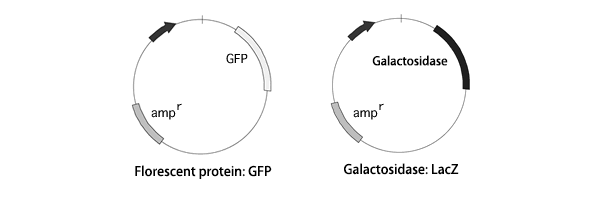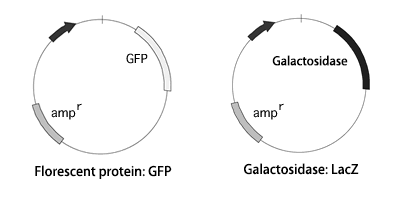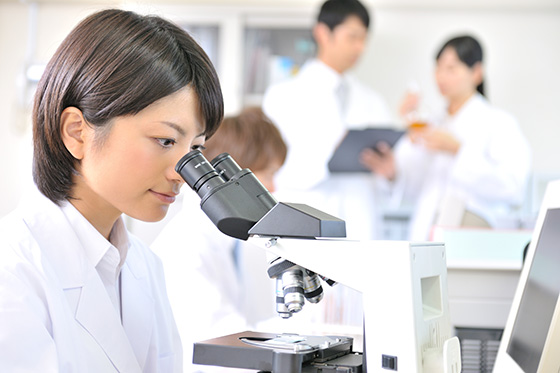Learn the genetic recombination process safely and easily.
(Target: High school students, vocational school students, and university preparatory course students)
Features
- No special reagents are used.
- No special equipment is required.
- Previous difficult preparation is not required.
- Waste disposal is easy thanks to the attached autoclave bags.
- Learn the genetic recombination process safely and easily.
- Safe E. coli without pathogenicity (E. coli K-12 strain) are used.
- Learn the regulation mechanism of gene expression.
- Study the regulation of LacZ gene expression using IPTG and X-gal.

- Visually perceive the experiment results.
- Three kinds of genes can be transferred: green florescent protein (GFP) gene, β-galactosidase (lacZ) gene, and drug-resistant (ampicillin-resistant) gene.
- Two kinds of plasmids are used (GFP gene and ampicillin-resistant gene; LacZ gene and ampicillin-resistant gene).
- No special equipment is required.
- Thermostatic bath, incubator, and UV ramp are required.
- Previous difficult preparation is not required.
- Culture plates have already been prepared to reduce the necessary preparation by the teacher.
- Waste disposal is convenient thanks to the attached autoclave bags.
- Waste, such as used plates, is placed in an autoclave bag, and the bag can be discarded as general waste after sterilization.
(Disposal methods may differ in some municipalities. Please consult your local municipal office.)
- Waste, such as used plates, is placed in an autoclave bag, and the bag can be discarded as general waste after sterilization.
Gene Transfer
Plasmid
E. coli DNA rings are called plasmids in addition to the original genomic DNA. Plasmids generally contain DNA with specific functions, and E. coli can adapt to different environments by sharing the plasmids.
In the kit using the characteristics of E. coli, two kinds of plasmids (pBR322), in which the green florescent protein (GFP) gene and the β-galactosidase (lacZ) gene have been incorporated, are simultaneously transferred into E. coli thereby the E. coli is transformed. In addition, a drug-resistant (ampicillin-resistant) gene has been incorporated in each plasmid as a selectable marker.







